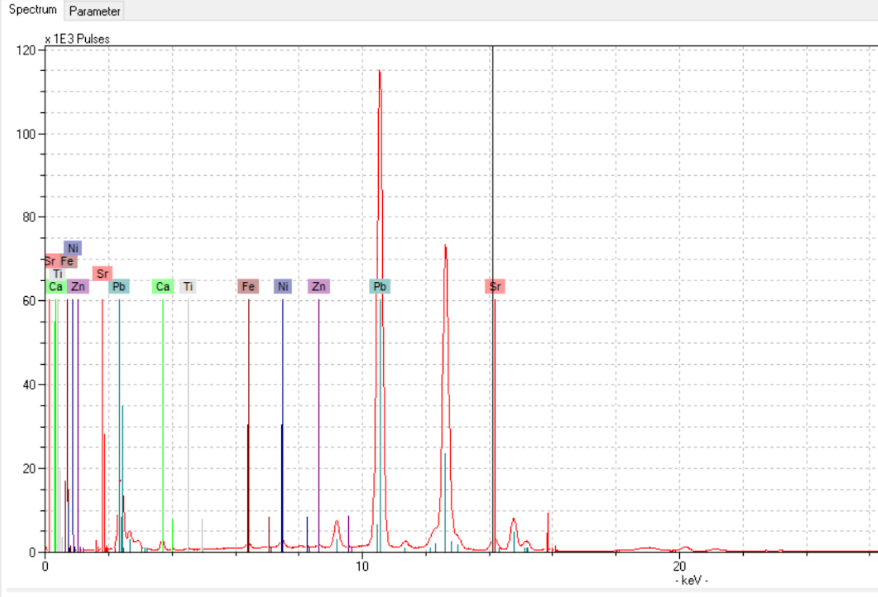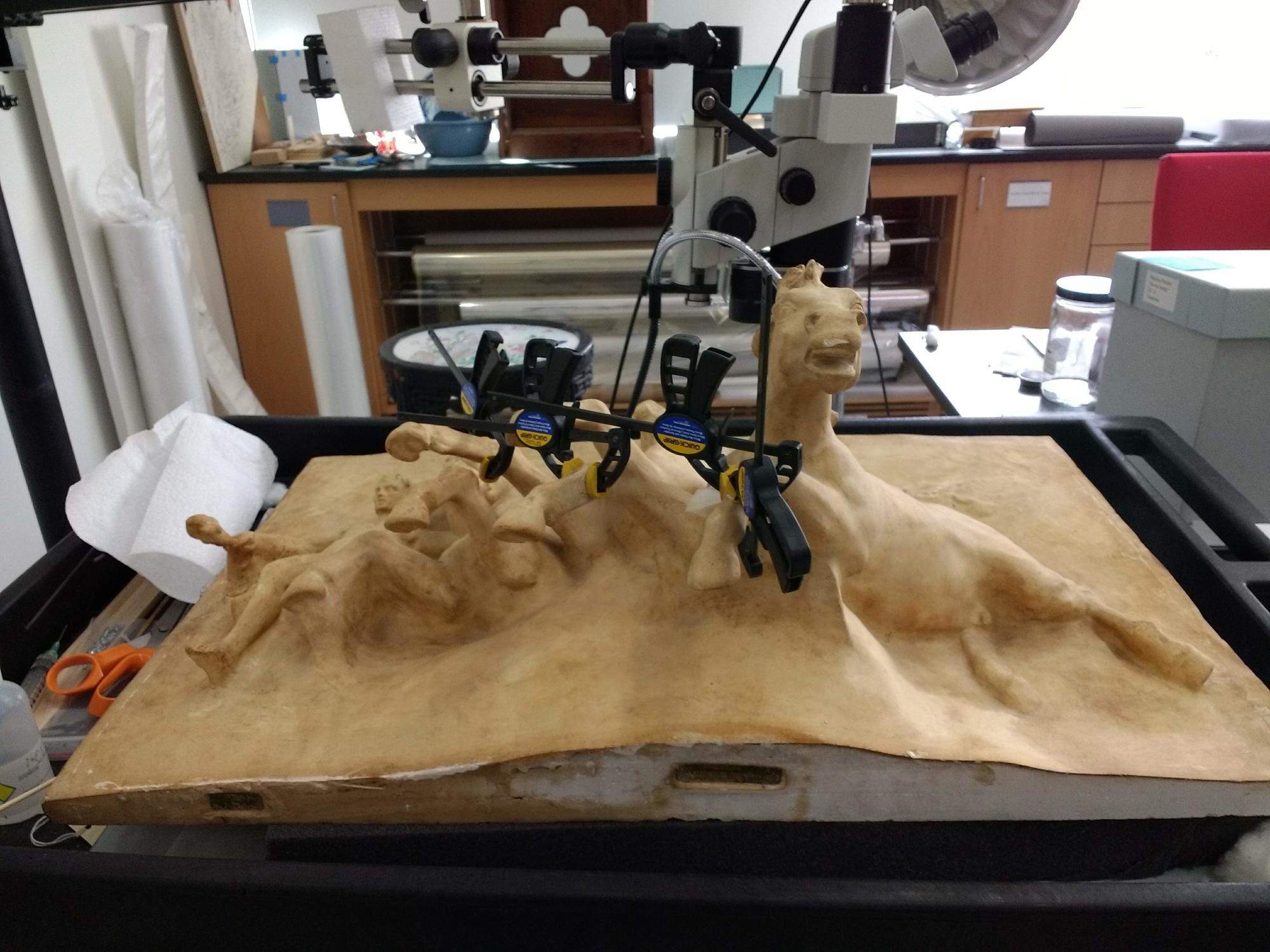Above the doorway of the slim first floor gallery known as the Vatichino, or little Vatican, Isabella Stewart Gardner displayed a plaster cast of horses in high relief. The Horses of Anahita or The Flight of Night is one of the most well-known works by American artist William Morris Hunt (1824–1879) and in 2019, Gardner Museum conservators cleaned it using a laser.

Isabella Stewart Gardner Museum, Boston
William Morris Hunt’s Horses of Anahita in the Vatichino
William Morris Hunt’s Horses
In 1846, William Morris Hunt received a translation of a Persian poem about Anahita—the goddess of fertility and the night—from his brother. He began translating the text into a picture of the deity’s horse-drawn chariot fleeing the dawn. After having difficulty drawing the charging horses, he drew upon his foundations as a sculptor to model them in clay in order to visualize the complex perspective. Hunt—and after his death, his estate—made multiple plaster casts of the sculpture. Copies of The Horses of Anahita exist in museum collections throughout the country, including the Metropolitan Museum of Art, the Art Institute of Chicago, and the nearby Boston Athenaeum. Isabella Stewart Gardner acquired her copy in the late 1800s when it was photographed in the Boudoir of her Beacon Street residence.
In 1875, New York State commissioned Hunt to decorate the Assembly Chamber at the Capitol in Albany and he finally adapted this horse scene into two dimensions as part of a large lunette mural called The Flight of Night. Unfortunately, the mural was covered a few weeks after its completion in 1879 when the ceiling of the building was lowered due to architectural faults and water leaks. An oil study for it survives in the collection of the Museum of Fine Arts, Boston.
How do you clean a plaster cast?
In 2018, the plaster in the Gardner’s Horses of Anahita was cracked in several areas and was covered in a layer of dark gray soot and grime, a vestige of the Museum’s historical use of coal-powered furnaces for heating. Underneath the soiling, the plaster was coated with a patchy amber-toned varnish. Curators and conservators wished to clean the cast while retaining this original coating.

Isabella Stewart Gardner Museum, Boston (S33w2)
William Morris Hunt’s Horses of Anahita, before the 2018–2019 cleaning
Plaster objects are sensitive to water and do not always respond well to cleaning with solvents. Moreover, plaster can crack and flake under too much pressure, which means that certain dry cleaning methods are also inappropriate.
Laser Cleaning
The Museum’s conservation department owns a specialized laser that is able to clean objects ranging from stone to gilded surfaces. Conservators spot tested the laser on the sides of the plaster cast to determine whether the tool would be able to remove the heavy soot layer while preserving the coating. We found that we could work at a low energy setting to create a diffuse beam that allowed us to clean the plaster safely.

Isabella Stewart Gardner Museum, Boston (S33w2)
Cleaning test spots on the side of William Morris Hunt’s Horses of Anahita in 2018
This process was challenging because the coating, which contains lead, could be discolored by the laser from too much exposure. Undercuts and tight passages required more passes to clean, necessitating a delicate balance between removing the grime and preserving the coating.
In spite of the obstacles encountered in this treatment, we were able to use the laser to achieve an even cleaned surface. Alternative cleaning methods proved ineffective or risky to the underlying plaster. Using our laser, we protected the fragile plaster and left the golden coating intact.
Isabella Stewart Gardner Museum, Boston (S33w2)
William Morris Hunt’s Horses of Anahita before and after the 2018–2019 conservation treatment
After repairing and filling cracks in the plaster, we were able to return the object to its place of pride, overlooking Isabella’s personal little Vatican.
You May Also Like

Read More on the Blog
Isabella Stewart Gardner and Her Horses

Explore the Museum
The Vatichino

Read More on the Blog
Isabella’s Delightful Stone Fruit Baskets







